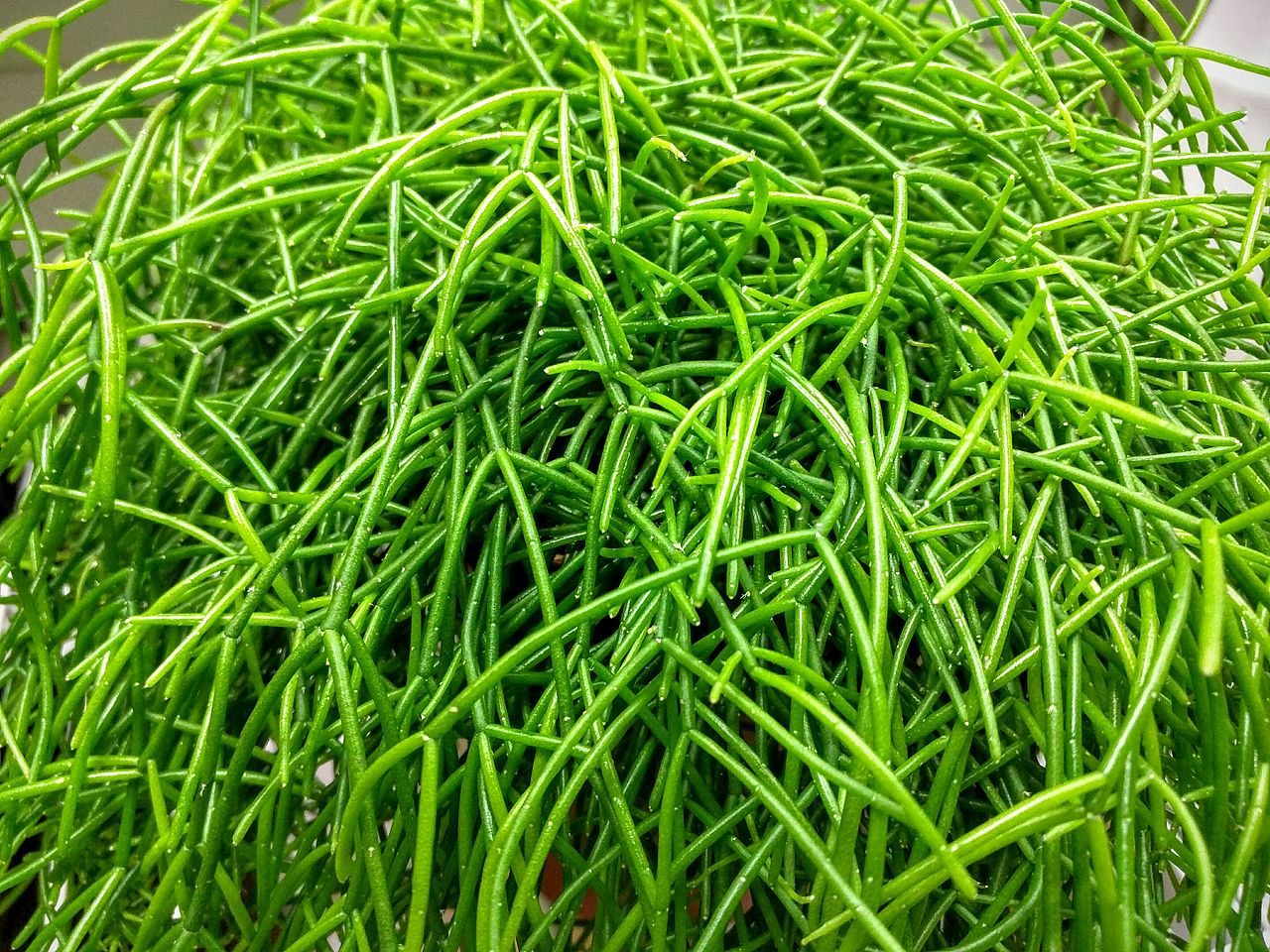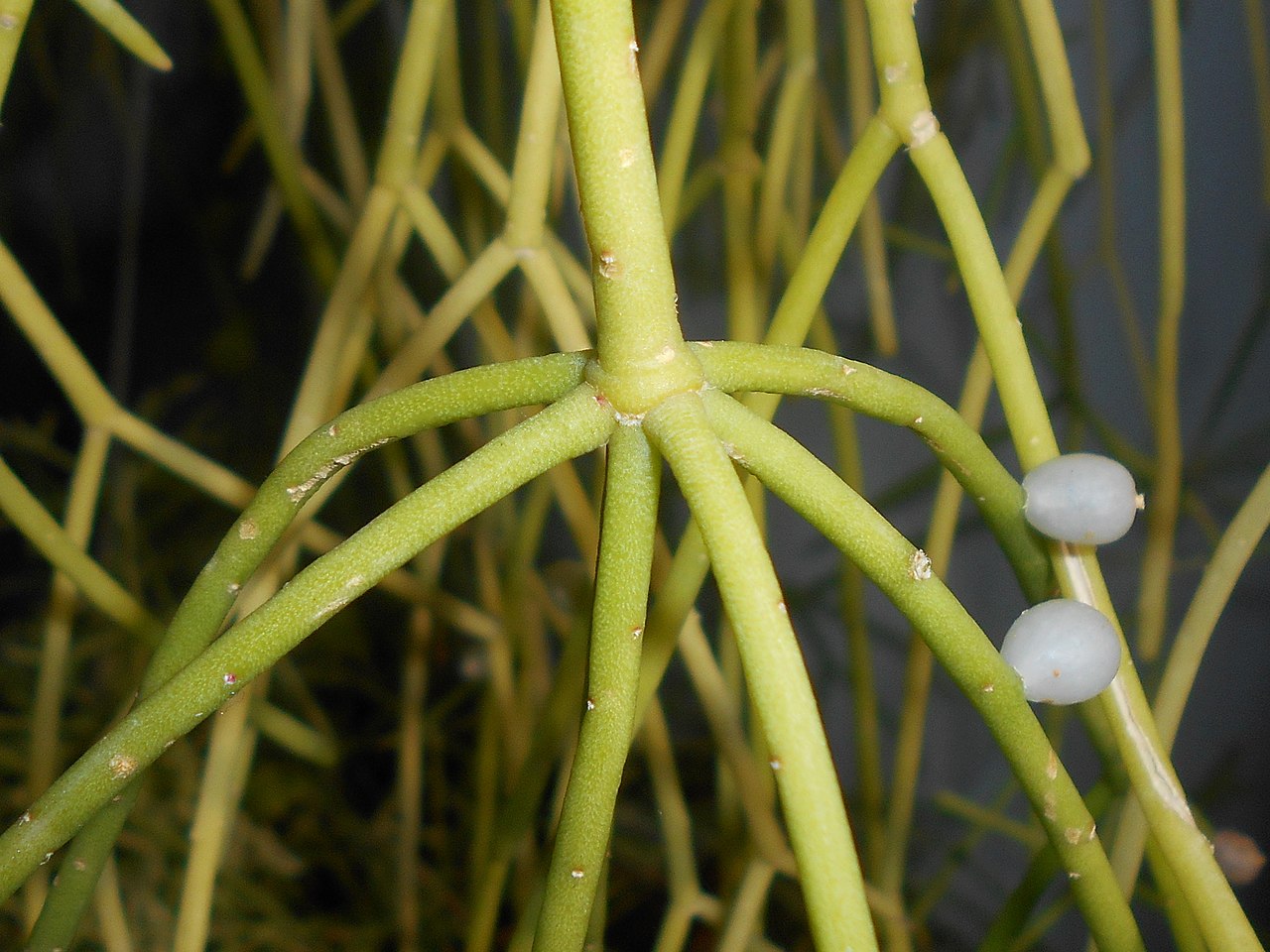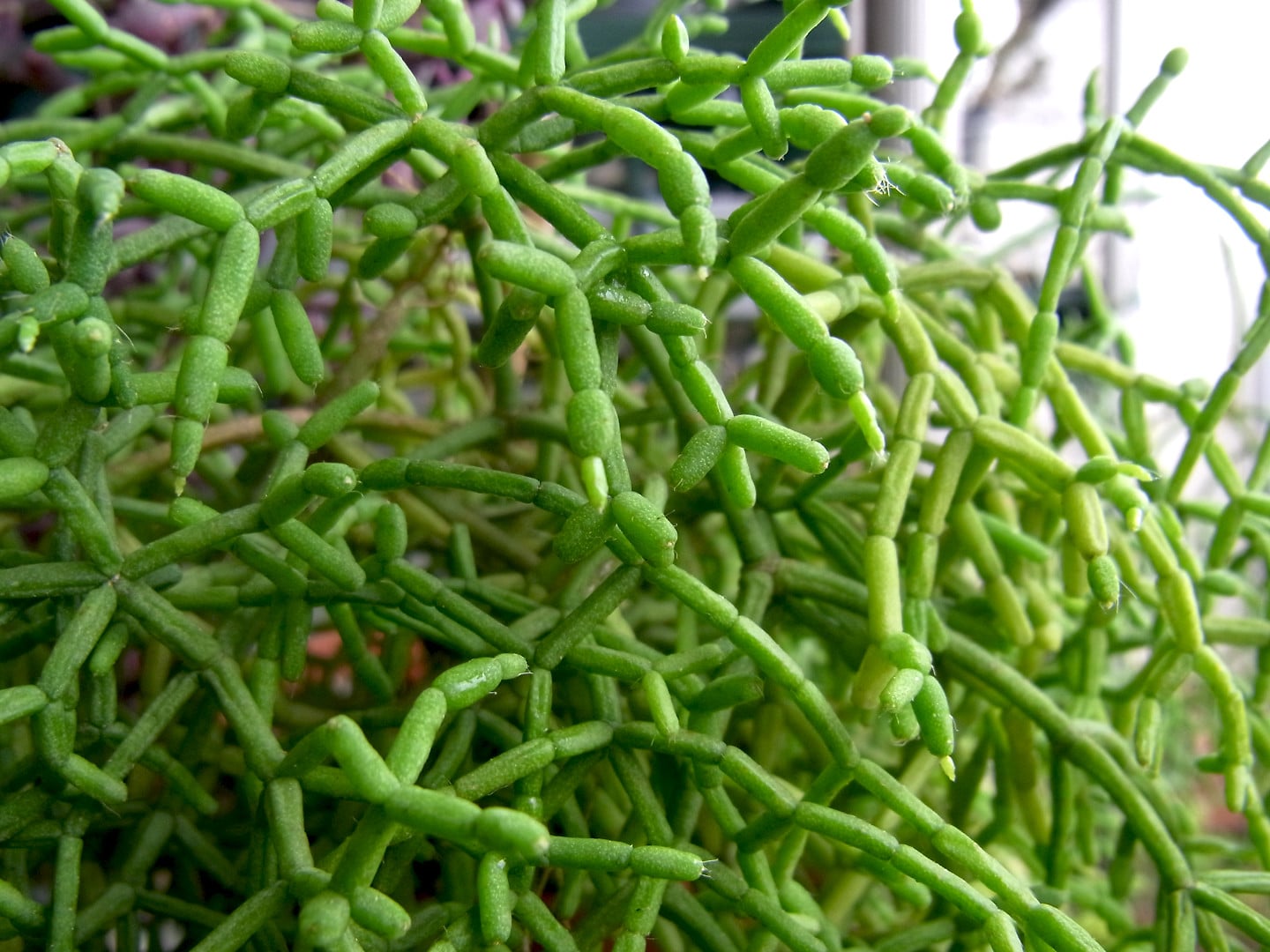
Image - Wikimedia / Assianir
Let's be honest: there are cacti ... that the least they seem to be is precisely that, cactus. The rhipsalis they are a clear example of what we have just said. And it is that, unlike the great majority of species of cacti, our protagonists do not have long spines; in fact, in certain cases they do not have this type of defensive 'weapons'.
However, they do have greenish stems, through which they can photosynthesize without problems, and therefore grow ... in their own way.
Origin and characteristics of the Rhipsalis
The genus Rhipsalis is composed of about 35 species of epiphytic cacti distributed throughout Central America to the north and center of South America. They are typical of tropical and subtropical regions, so their water needs are somewhat higher than those of their congeners.
If we talk about its characteristics, are epiphytic cacti, which develop more or less cylindrical and long green stems. They do not usually have spines, but if they do, they are very short and whitish.
Main species
The best known are the following:
Rhipsalis baccifera

Image - Wikimedia / Salicyna
El Rhipsalis baccifera, popularly known as the Cuban disciplinary or ripsalis, is a species native to Central and South America, which has managed to become naturalized in the tropical regions of Africa. Develops stems with very short spines, and produces white flowers.
Today the scientific name is accepted Rhipsalis cassutha as a synonym for R. baccifera.
Rhipsalis cereuscula

Image - Flickr / salchuiwt
El Rhipsalis cereuscula It is a species of cactus endemic to Bolivia, Brazil, Paraguay, Uruguay and Argentina. Develops cylindrical stems, and produces white flowers.
Rhipsalis cruciformis
El Rhipsalis cruciformis is a cactus native to Brazil, Argentina and Uruguay that develops triangular and fleshy stems, without thorns. Produces pink flowers.
Rhipsalis pilocarpa

Image - Wikimedia / Zalofm
El Rhipsalis pilocarpa is a species of cactus endemic to Brazil that develops cylindrical stems armed with thorns. Produces white flowers.
What are the care that must be provided to them?
If you dare to have a copy of Rhipsalis as part of your collection, or no longer from it, but from your balcony or terrace for example, we recommend that you provide it with the following care:
Location
These are plants that they must be placed in a very bright area, without direct sun. That is why it is preferable to have them outside. Now, if you have a room facing east in your home, and a lot of light enters through the windows, they will probably grow well there.
Soil or substrate
- Flower pot: to ensure good rooting and correct development, we recommend filling it with a mixture of universal substrate and perlite in equal parts.
Use pots with holes in the base so the water can escape. - Garden: being epiphytic plants, that is, plants that live on others, you can have Rhipsalis growing in the hollow of a tree for example.
Irrigation

Image - Flickr / epiforums
Irrigation must be moderate, somewhat more often than most cacti. As usual, They have to be watered about 3 times a week during the summer, and 1-2 times a week the rest of the year. During the winter, water little or nothing, only once a month or every 15 days.

If in doubt, check the moisture of the soil or substrate for example with a digital moisture meter, or digging a bit with your fingers.
Subscriber
It is advisable to pay Rhipsalis throughout the growing season, that is, from spring to summer, and you can even extend it until autumn if you live in an area where the climate is mild or warm all year round.
Use specific fertilizers for cacti, and follow the indications specified on the product packaging. In this way, you will avoid the risk of overdose, and incidentally, you will also be able to keep your plant properly fed.
Pruning
Don't need it, but if you see that it is growing too much you can trim its stems a little and make cuttings in spring or summer 😉.
Multiplication
Rhipsalis multiply by cuttings above all, and sometimes for seeds, in spring. Let's know how to do it:
Cuttings
The easiest way to get new copies is taking advantage of the pruning remains to plant them in individual pots with vermiculite or coconut fiber.
If the substrate is kept moist and the pot placed in semi-shade, in a couple of weeks they will emit their own roots.
Seeds
The seeds must be placed on universal substrate mixed with perlite in equal parts, to later be covered by a thin layer of previously washed river sand or pumice.
It is important not to pile them up, otherwise as they grow, several will be lost.
Keeping the substrate moist and in a bright area (without direct sun), they will germinate in about ten to fifteen days.
Planting or transplanting time
Every two years, in spring.
Rusticity
The Rhipsalis they are very sensitive to cold and frost, being the minimum temperature that they support is 10 degrees centigrade. If your area is lower, do not hesitate to protect your cacti indoors, in a room where there are no drafts.
Where to buy?

Image - Wikimedia / Stuart
Get your Rhipsalis from No products found..